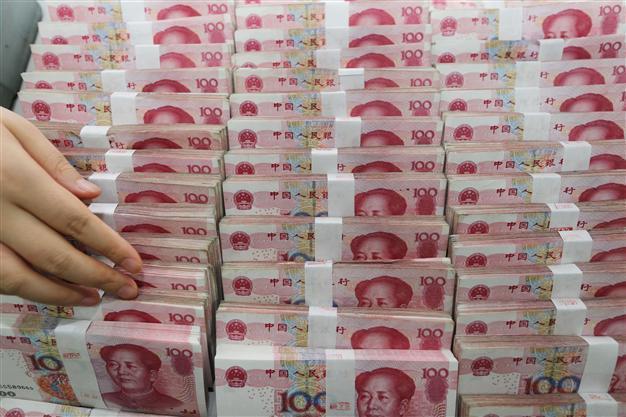China devalues yuan after poor economic data
SHANGHAI - Reuters

AFP photo
China devalued the yuan on Aug. 11 after a run of poor economic data, guiding the currency to its lowest point in almost three years.
The Central Bank described the move as a “one-off depreciation” of nearly 2 percent, based on a new way of managing the exchange rate that better reflected market forces.
“Since China’s trade in goods continues to post relatively large surpluses, the yuan’s real effective exchange rate is still relatively strong versus various global currencies, and is deviating from market expectations,” the bank said in a statement.
“Therefore, it is necessary to further improve the yuan’s midpoint pricing to meet the needs of the market.”
China manages the exchange rate through an official midpoint, from which it can vary 2 percent each day, but in recent months volatility has vanished. Traders suspect the bank, along with major state-owned banks, had been propping up the yuan against depreciation pressure.
The People’s Bank of China said it was now basing the midpoint on market makers’ quotes and the previous day’s closing price. It weakened the midpoint to 6.2298 per dollar on Aug. 11, compared with Aug. 10’s 6.1162 mid-point - the biggest-ever one-day adjustment to the midpoint.
The spot yuan price touched its weakest point since September 2012 in early trade.
At the weekend, China reported a surprisingly heavy fall in exports and a continuing slide in producer prices to a near six-year low in July. China’s strong yuan policy, partly designed to foster its use as an international currency, has hurt low-end export manufacturers.
A 2 percent fall in the value of the yuan is a relatively huge move for China.
